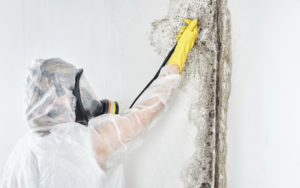A roof is an exterior covering that protects a building against rain, snow, sunlight, extreme temperatures, and wind. The roofing profession demands a copious amount of willpower and patience, both in the office, gawking at computer screens, and working year-round in torrid heat and cold. Contact Metal Roofing Montana now!
Flat roofs are a common choice for commercial buildings. They offer a lot of space for solar panels, passive lighting solutions, and air conditioning components. They are also less expensive than sloped roofs because their structure is a little simpler, and they can be constructed on a much shorter timeline.

Many people confuse this type of roof with a “sunken-in” roof, but this isn’t quite the case. While they appear level to the eye, a flat roof has a bit of a slope to allow water and snow to drain off the surface. Nevertheless, this roof design isn’thas its drawbacks.
If a flat roof isn’t properly maintained, there is the risk of puddling and leaks. This is because gravel, leaves, and debris can block drainage outlets (such as scupper drains or downpipes). In colder climates, this can cause the water to freeze and break up the surface of the roof, which can lead to additional problems like mold and rot.
There are a variety of roofing materials that can be used on flat roofs, including EPDM rubber, TPO, PVC, Modified bitumen, and built-up roofing. Each of these has its own set of advantages and drawbacks, and the best choice for you will depend on your location, climate, and budget.
Regardless of the material you choose, all flat roofs require regular maintenance to ensure that they are safe and long-lasting. This includes inspections, cleaning, and repairs. A skilled roofer will be able to identify and repair problems with your flat roof before they can become serious.
A flat roof can be a great addition to your building, but it isn’t for everyone. It can be difficult to maintain, and it may not last as long as a pitched roof. Nonetheless, it offers many benefits that make it a popular option for commercial and industrial buildings. If you’re interested in learning more about this roof design, contact a local roofing contractor. They can help you explore your options and find the right type of flat roof for your home or business.
Agable Roof
A gable roof is one of the most popular types of residential roofs. Its simple design makes it ideal for cold climates, and it fits nicely with a variety of home styles. In addition to their aesthetic appeal, gable roofs also provide plenty of interior space and good ventilation. They can be crafted from a wide range of materials, including metal sheets, wood, concrete or clay tiles, and asphalt shingles. These roofing options are available in a variety of colors and can complement almost any type of siding or exterior material.
A typical gable roof is composed of two planes that slope in opposite directions and meet at the top to form a triangular ridge. This design is a classic in cold and temperate climates and can be constructed using rafters, trusses or purlins. This type of roof is often used on barns and cottages, but it can also be seen on homes in many regions.
The triangular end of a gable roof is called a gable, and it may be covered with a flat surface or with the same material as the rest of the structure. In some cases, a gable will have a small hip added at the top to add strength and beauty. This type of roof can be found on houses and garages, and it offers good drainage even in snowy conditions.
Gable roofs are simple and easy to build, so they tend to be less expensive than hip or other roof designs. Additionally, gable roofs allow for good ventilation in the home, which can help reduce energy costs and moisture issues. They also have plenty of surface area for installing solar panels, which can increase energy efficiency.
As with any roof, gable roofs require regular maintenance and inspections to keep them in good condition. At Young Construction, we recommend scheduling an annual maintenance inspection to catch any problems before they become major issues. We can also assist with shingle repairs and replacements, roof cleaning, and any other services you may need. Contact us today for more information or to schedule an appointment.
Mono-Pitch Roof
A mono pitch roof has one plane that slopes down to a single ridgeline, providing a sleek, contemporary aesthetic. With no angled walls to block sunlight or obscure views, this is an ideal option for home extensions and renovations that require a simple, yet distinctive architectural presence.
The single-plane design also saves on building costs, as it reduces material and labour costs compared to dual-pitched structures. Using prefabricated roof trusses can speed up construction times and further reduce costs. Additionally, because there is only one sloping plane, a mono pitch can support solar panels easily without the need for angled racks or gable ends.
As a result, a mono pitch roof is perfect for homeowners who want to maximize the amount of energy they can capture from the sun. The sloping plane is also easy to access for maintenance purposes, making it possible to inspect and replace worn components or guttering without the need for scaffolding.
For those with more traditional homes, a mono-pitch roof can still provide an exciting architectural touch, highlighting the features of the home’s structure. As with all roof types, proper construction and quality materials are key to performance. Adequate drainage capacity and a strong, stable frame are essential to preventing water leaks and structural damage.
The sloping plane also allows architects to create clerestory windows, or windows that are above eye level on the eaves of the roof. This enables natural light to flood into rooms, creating a sense of spaciousness and a brighter, more comfortable living environment.
Whether you are building a new home or renovating an existing space, there are plenty of choices for the right roofing system. Consider your project’s size, style, budget and other requirements to find the perfect fit.
For more information on which roofing solution is best for you, get in touch with our team of professionals today. We are happy to discuss your options and help you build a roof that is both stylish and functional.
Tile Roof
Tile roofing is one of the most durable and attractive roofs. Made of clay, concrete or slate and available in a variety of shapes and sizes, these roofs offer endless aesthetic possibilities for your home. Their longevity and durability adds value to your home and can help reduce your energy costs.
Tile is available in a wide range of colors and styles that complement nearly any architectural style. Historically, tiles gained their color purely from the clay they were made of; today, however, they can be colored with glazes to achieve many different shades and combinations. In addition to their beautiful looks, clay and concrete roof tiles have exceptional thermal properties to help regulate temperature and prevent energy loss and gain.
Compared to asphalt shingle roofing, tile roofing is more expensive to install. However, it lasts far longer and requires significantly less maintenance than a traditional shingle roof.
The durability of a tile roof depends on several factors, including the quality and thickness of the tiles, the underlayment materials used, and the installation and support of the tiles. A tile roof should be inspected at least once per year for signs of damage or leaks, and should be repaired immediately to prevent further damage and protect the integrity of the underlayment.
As with other types of roofs, the tiles on a tile roof are susceptible to impact damage, and they may require replacement. Water and debris accumulation can also cause problems, so yearly visual inspections are essential to identify issues like clogged gutters and moss growth, which should be treated with biocides or zinc strips to avoid structural damage.
Tile roofs are extremely versatile and have been in use for thousands of years. Their beauty and strength are unmatched by other roofing materials, and they can provide a stunning appearance to any home. A well-maintained tile roof can last for centuries, making it a long-term investment for homeowners and a positive asset when it comes time to sell. Whether you are looking for a new roof or need to repair your existing one, a professional roofing contractor can help you make the best choice based on your needs and preferences.








